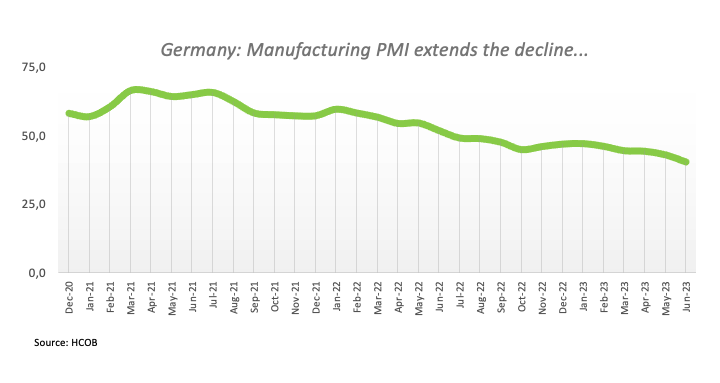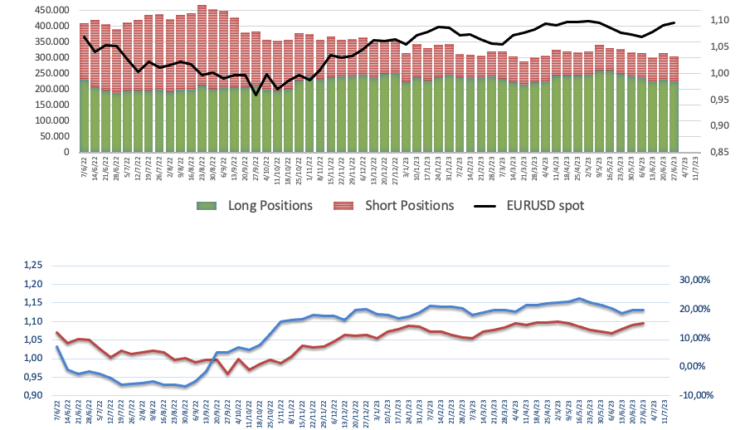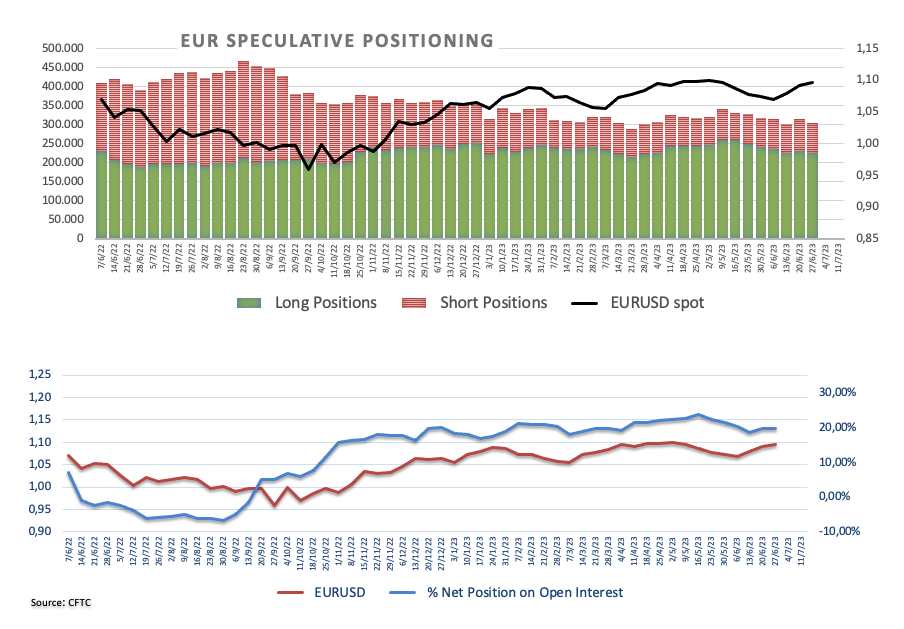Euro maintains the recovery mode near 1.0900
- Euro now regains some ground lost vs. US Dollar.
- Stocks in Europe maintain the firm note at the beginning of the week.
- EUR/USD gather some upside traction and approaches 1.0900 on Monday.
- Final Manufacturing PMIs in the euro area remained depressed in June.
- US ISM Manufacturing PMI will be in the limelight in NA trading hours.
At the start of the new trading week, the Euro (EUR) comes under pressure and retraces part of Friday's strong gains, forcing EUR/USD to drop below the key support level of 1.0900 the figure.
Meanwhile, the US Dollar (USD) is showing a better performance, with the USD Index (DXY) gaining renewed strength and surpassing the key level of 103.00, despite the lack of direction in US yields on Monday.
The potential future actions of the Federal Reserve and the European Central Bank (ECB) in normalizing their monetary policies remain a topic of ongoing debate amidst increasing speculation about an economic slowdown on both sides of the Atlantic. Currently, bets remain firm that there will be a 25 basis point rate increase by both central banks at their meetings in July.
Around the ECB, Board member Joachim Nagel said there is still a way to go with policy tightening and the inflation outlook is predominated by upside risks. He reported that monetary policy signals are clearly pointing in the direction of further tightening.
Looking at the latest CFTC Positioning Report, net longs in EUR remained steady and reached a 2-week high of around 145K contracts in the week ending June 27, despite the spot reaching new monthly highs above 1.1000, which ultimately fizzled out due to the recovery in the risk-off trade and buying interest in the USD.
In terms of economic data, the final Manufacturing PMI figures for the euro area and Germany in June were 43.4 and 40.6, respectively.

Meanwhile, in the US, the ISM Manufacturing PMI will be the centre of attention, alongside the final S&P Global Manufacturing PMI and Construction Spending.
Daily digest market movers: Euro keeps the erratic performance
- The EUR reverses course and retreats to the sub-1.0900 zone.
- US markets face a shortened trading week due to Independence Day.
- Chinese Caixin Manufacturing PMI failed to surprised markets.
- ECB's Nagel reiterates that inflation risks are tilted to the upside.
- The probability of a Fed rate hike in July is near 88%.
- Investors' attention will be on the US ISM Manufacturing PMI.
Technical Analysis: Euro appears supported by the 100-day SMA
EUR/USD appears under pressure and risks a potential deeper drop in case the selling bias picks up pace. That said, the loss of the weekly low at 1.0835 (June 30) could open the door to a test of the interim 100-day SMA at 1.0819. The breakdown of the latter should meet the next contention area not before the May low of 1.0635 (May 31) ahead of the March low of 1.0516 (March 15) and the 2023 low of 1.0481 (January 6).
If bulls regains the upper hand, the next hurdle is then expected at the June peak of 1.1012 (June 22) prior to the 2023 high of 1.1095 (April 26), which is closely followed by the round level of 1.1100. North from here emerges the weekly top of 1.1184 (March 31, 2022), which is supported by the 200-week SMA at 1.1181, just before another round level at 1.1200.
The constructive view of EUR/USD appears unchanged as long as the pair trades above the crucial 200-day SMA, today at 1.0595.
Interest rates FAQs
Interest rates are charged by financial institutions on loans to borrowers and are paid as interest to savers and depositors. They are influenced by base lending rates, which are set by central banks in response to changes in the economy. Central banks normally have a mandate to ensure price stability, which in most cases means targeting a core inflation rate of around 2%.
If inflation falls below target the central bank may cut base lending rates, with a view to stimulating lending and boosting the economy. If inflation rises substantially above 2% it normally results in the central bank raising base lending rates in an attempt to lower inflation.
Higher interest rates generally help strengthen a country’s currency as they make it a more attractive place for global investors to park their money.
Higher interest rates overall weigh on the price of Gold because they increase the opportunity cost of holding Gold instead of investing in an interest-bearing asset or placing cash in the bank.
If interest rates are high that usually pushes up the price of the US Dollar (USD), and since Gold is priced in Dollars, this has the effect of lowering the price of Gold.
The Fed funds rate is the overnight rate at which US banks lend to each other. It is the oft-quoted headline rate set by the Federal Reserve at its FOMC meetings. It is set as a range, for example 4.75%-5.00%, though the upper limit (in that case 5.00%) is the quoted figure.
Market expectations for future Fed funds rate are tracked by the CME FedWatch tool, which shapes how many financial markets behave in anticipation of future Federal Reserve monetary policy decisions.



Comments are closed.